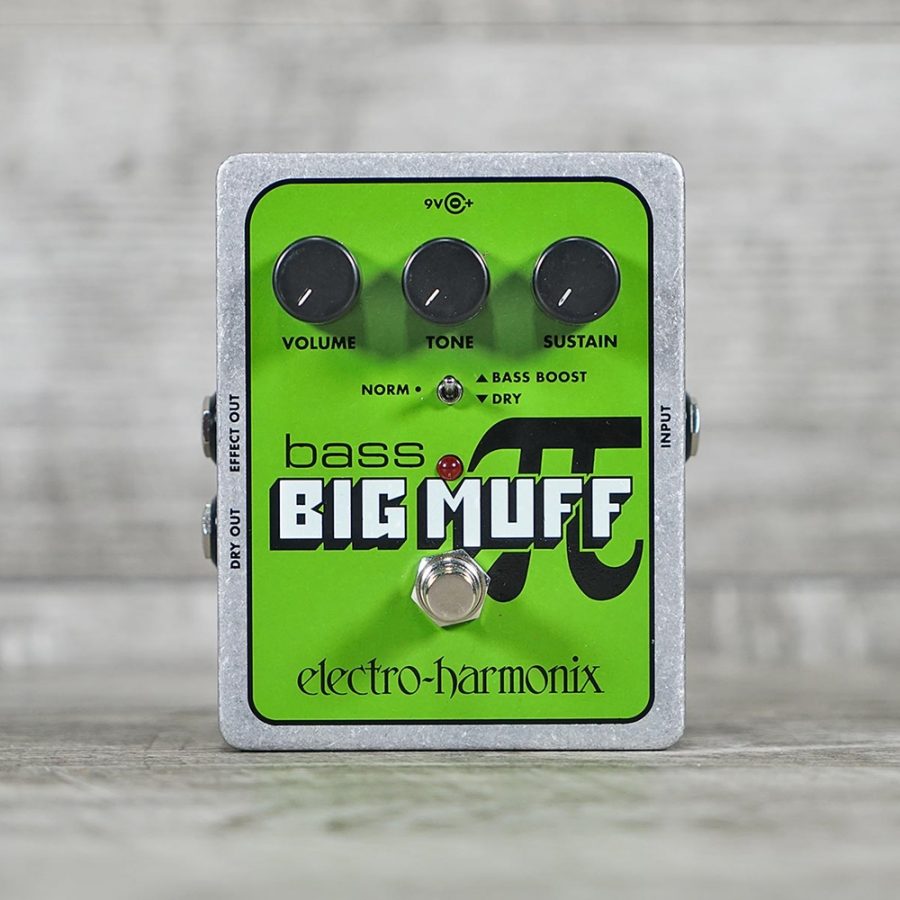I Have No Mouth, and I Must Howl
Photo Credit: themusicden.com
The classic ‘Electro-Harmonix Bass Big Muff Pi’, perhaps the most recognizable Bass Guitar fuzz pedal around. Known for its simple controls and its humongous sound, the pedal and its various six-string counterparts can be found on the pedalboards of musicians across a whole host of genres.
October 22, 2019
The fuzz that blurs the lines of musicality and sound, the crunch that collapses bars upon themselves, the growl that destroys planes of sonic influence and rips into the eardrums of it’s purveyors and haters alike.
This dynamic howl, this deadly crunch, this fuzzed out shriek and this hurtful broken growl; this lovely sound is known as distortion. It’s characterized by gnarled waves of heaviness, realized and transversed by the hurling of sound through the medium of instrumentation.
Distortion is the embodiment of unpleasantness; it is raw and powerful, filtered and warped to a heavy degree. Yet, it remains full-bodied and natural.
Distortion – at least in a sonic sense – is broadly defined by a stark change in the waveform of a sound, where the sound wave experiences a sort of flatline at the top of it’s ark.
This flatline is caused by the signal becoming “too strong” for the medium it’s being translated through.
Essentially, the decibel level of a sound should remain between +/- 100 db in order for the sound to remain at a stable level, void of any sort of distortion.
Of course, sound is a science just like any other. We could devote multiple pages to waveforms and still barely scratch the surface. But the gist of the idea is – hopefully – represented well enough in the paragraph above.
While distortion as a sound is commonly avoided by audio engineers and musicians alike, in many styles of music, it’s brought forward through the use of a multitude of different effects. In some styles, distortion can be reached through the use of on-board drivers found on synthesizers and inside of Digital Audio Workshops (or DAWs). In others, it can be reached through the use of effect pedals and tone control, usually in the form of overdrive pedals or specialized Direct Input Units (or DIs).
Distortion has evolved from just a simple twist on a wave of sound. It’s developed into a controllable sound with a heavy influence on multiple genres, and has helped to craft some of the most classic sounds of the modern musical age.
Distortion and it’s many iterations have found their way into just about every genre of music.
From the acidic lull of Psychedelic Rock, to the loud rolling screams of Punk Rock, and the repetitive, aggressive drum machines of billboard topping Hip-Hop tracks, distortion can be found in one way or another. Distortion is a sound that will remain at the forefront of the music industry and underground alike.



